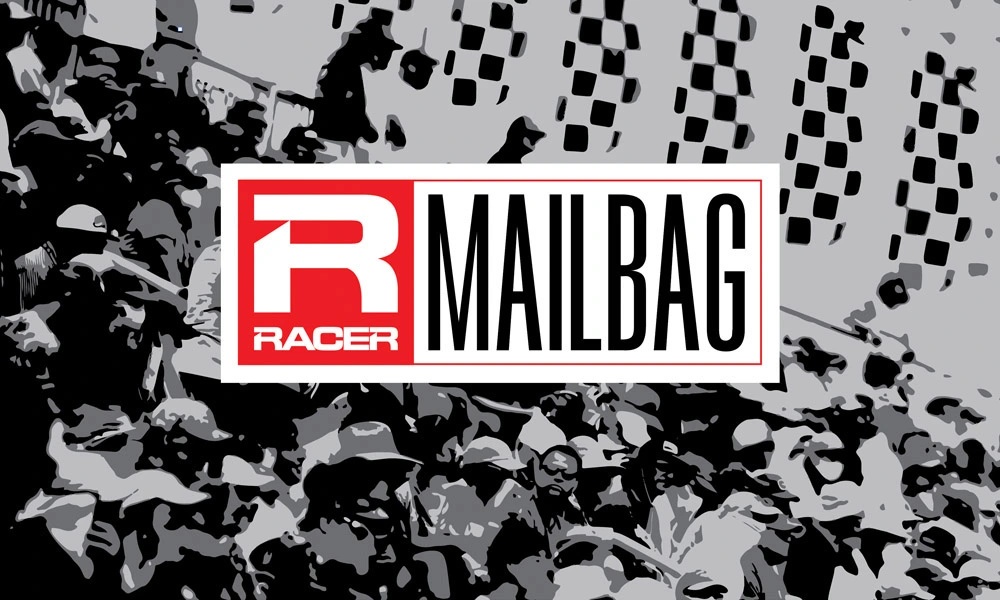Q: In last week’s Mailbag Craig asked why marshals still wave flags directly below the new electronic flag boards. As someone who has been volunteering to wave flags since 2007, I’ll say your answer was pretty spot-on (because yes, if IndyCar took away waving the flags completely, most marshals wouldn’t come to IndyCar events anymore, especially when other series don’t use the lightboards. Same reason I lost interest in Timing and Scoring when transponders came around).
The local flag conditions on the boards are controlled by each corner, but most of us come out to wave flags, not push buttons; so if nobody came out at all, there would be nobody to push those buttons. I figured I’d also provide what we are told at our morning meetings from IndyCar:
The cloth flags are still used for several reasons: the lightboard system may fail, and it is also only capable of showing one flag at a time. So the highest priority flag is shown on the board (usually yellow), but if a surface is also needed for debris, or a white for a safety vehicle, or both, then the cloth flags must be used to communicate the additional information. For consistency and clear messaging, whatever is on the board will be shown as a cloth flag as well so that there is no confusion over the board showing one thing and the cloth flags a different message.
The cloth flags are (in most cases) directly beneath the boards so that the zone the flags/boards cover are the same (typically in racing, a driver is considered to be under control of a yellow flag when they reach the invisible line across the racing surface perpendicular to the plane of the flag being shown, and are not out of the control of that flag until they reach the same perpendicular line for the following green flag. This is known as flag-to-flag coverage, vs. flag-to-incident coverage that is usually used in clubs). So if we are looking for passes under yellow etc., it is easier to define the yellow zone when the flags and boards are lined up. Makes life simpler for IndyCar race control as well.
Also, while this isn’t from IndyCar, most flaggers will tell you that body language makes a big difference to how drivers respond to a waving flag. While light boards are more visible, that flashing light looks the same whether it is a single car spun and stalled with one wheel on course but offline, or if it is a five-car pile-up causing 90% course blockage. Most flaggers however, will be doing what we call ‘ape**** flagging’ in the second scenario, and most drivers, even at the club levels, pick up on those nuances. Eventually the drivers are getting information over their radios as to the nature and location of the incident, but until that happens the flags/boards are all they have to rely on. IndyCar did experiment with using the boards only for yellow flags at Nashville in 2022. The cloth flags were immediately brought back at the next event…
Heather S., Currently waving flags at Petit Le Mans
MP: Thanks for the full rundown, Heather, and for your volunteerism.

Q: We’ve heard many times that Sebring, specifically the south half, is too bumpy for IndyCars to race on. I’m curious about the exact nature of that. Are the bumps so big that it’s literally impossible to drive an IndyCar on that portion of the track, or is it just that the setup would need to be so compromised that they’d be too slow for an exciting race? How do the bumps compare with IndyCar’s bumpiest street circuits?
Mike, California
MP: A bit of both, Mike. IndyCars are designed to work best with the bottom of the cars extremely low to the ground; this is where the extreme performance is made possible. To run at Sebring, the cars would need to be raised far too high to clear the bumps to perform in their intended window.
No street or road course compares to the bumps at Sebring.
Q: I got to wondering where Simon Pagenaud could possibly end up for next season. It’s looking like he might be left out to dry without a ride, which would be disappointing – especially if he doesn’t get to make a return after that unfortunate incident that had him not able to finish the rest of this past season.
Even if he can’t find a seat, I feel it’s right that MSR honor their relationship in a particular way that I think would be a really cool idea for next season. Since Castroneves is retiring from the IndyCar Series and just doing the Indy 500 as a one-off in the new third car, why not use that third car for the Indy Grand Prix a couple weeks prior in May as well… but for Pagenaud?
This way Simon and MSR’s time can end with them actually having an official last race together, so to speak, and it would be commemorating the inaugural winner of the IMS road course – it’s 10 year anniversary since that win.
We’ve seen on multiple occasions that entries that are made primarily just for the 500 go ahead and race in the May GP anyways due to its convenience to the 500 event schedule.
Put Pagenaud in the third entry for the Grand Prix. Then Castroneves in it for the 500. Last season’s MSR full-timers make their return in May at their respective tracks they’ve won at many times. Make it happen, MSR!
Wes Compton
MP: I really love this idea, Wes. I’ll mention it to Mike when I see him this week at Petit Le Mans.
